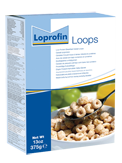Reflections from a rising sophomore managing PKU and a busy schedule

This time last year as James Fryer was beginning his first year of college at Willamette University, he knew he was heading into a big life transition. Some of the adjustments proved more stressful than he anticipated.
“Always remembering, on my own, to have an adequate supply of formula,” reflects James on one of his PKU management tips. His hometown and college are in different cities, meaning preparation is very important.
Good thing James is a planner. He thrives on a schedule, whether for formula supply or diet and wellness, and is a master at making them. “I look at my schedule to see where I have time to cook versus go for a run,” shares James. This is a prime example of James’ planning that he feels led him to be successful not only in the classroom but also on the soccer field, becoming part of Willamette’s club soccer team.

Another campus group important to James are the chefs who prepare James’ food. “Willamette has taught me new, interesting things about [cooking] vegetables,” says James.
He got close to one of the university chefs this past year who was dedicated to James’ diet. The chef introduced the freshman to new things, such as fried cauliflower “rice” and utilizing all types of spices like turmeric and paprika. It’s a great relationship that James hopes to continue.
“Perhaps the biggest mistake I made was not stocking enough prepared snacks around the dorm”
-James
Outside the dining hall and back in his dorm room, James learned a lesson he’s eager to share with other college-bound PKU’ers, “Perhaps the biggest mistake I made was not stocking enough prepared snacks around [the dorm].” By the end of the year, James had a nice stockpile of low protein snacks, including low protein cereal, his standby. And another favorite snack that he’ll be continuing to eat this year? James is ready with an answer: “Dried cranberries!”

Other “grab-and-go” food on hand included dried jackfruit, which his dad got for him, and which ended up being popular among his friends. Applesauce cups and low protein rice cereal treats also helped James stay full and fueled between meals.
“If you’re constantly hungry,” James recommends to other PKU college students, “consider talking [to your metabolic healthcare professional] about adjusting formula or food, versus going off diet.”
With a new school year on the horizon, James is looking to stay on track diet-wise to help him succeed at new heights on the field and in the classroom. In fact, he’s hoping to declare a major this year, potentially math. With club soccer, he shares that he’s interested in building a soccer community around him, which ties into another goal of establishing relationships that go deeper than the differences in his diet.
Good luck with sophomore year, James! And be sure to pack plenty of dried cranberries!
PhenylAde GMP READY is a medical food for the dietary management of proven Phenylketonuria (PKU) and must be used under medical supervision.
Always consult your metabolic healthcare professional prior to making any changes to your diet.
© 2019 Nutricia North America



